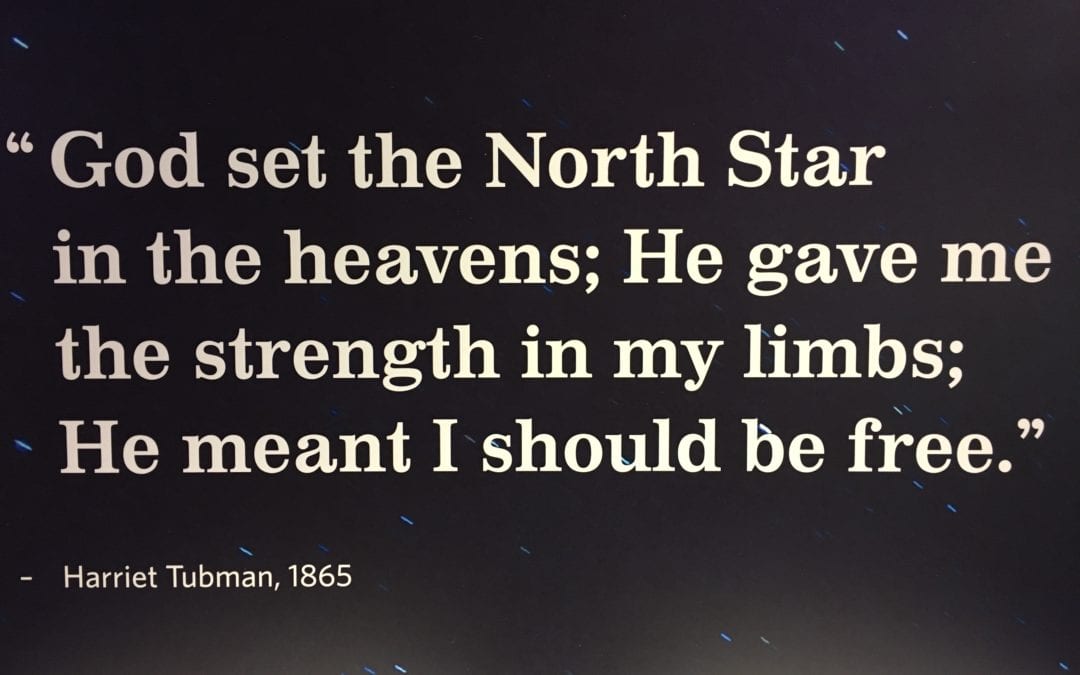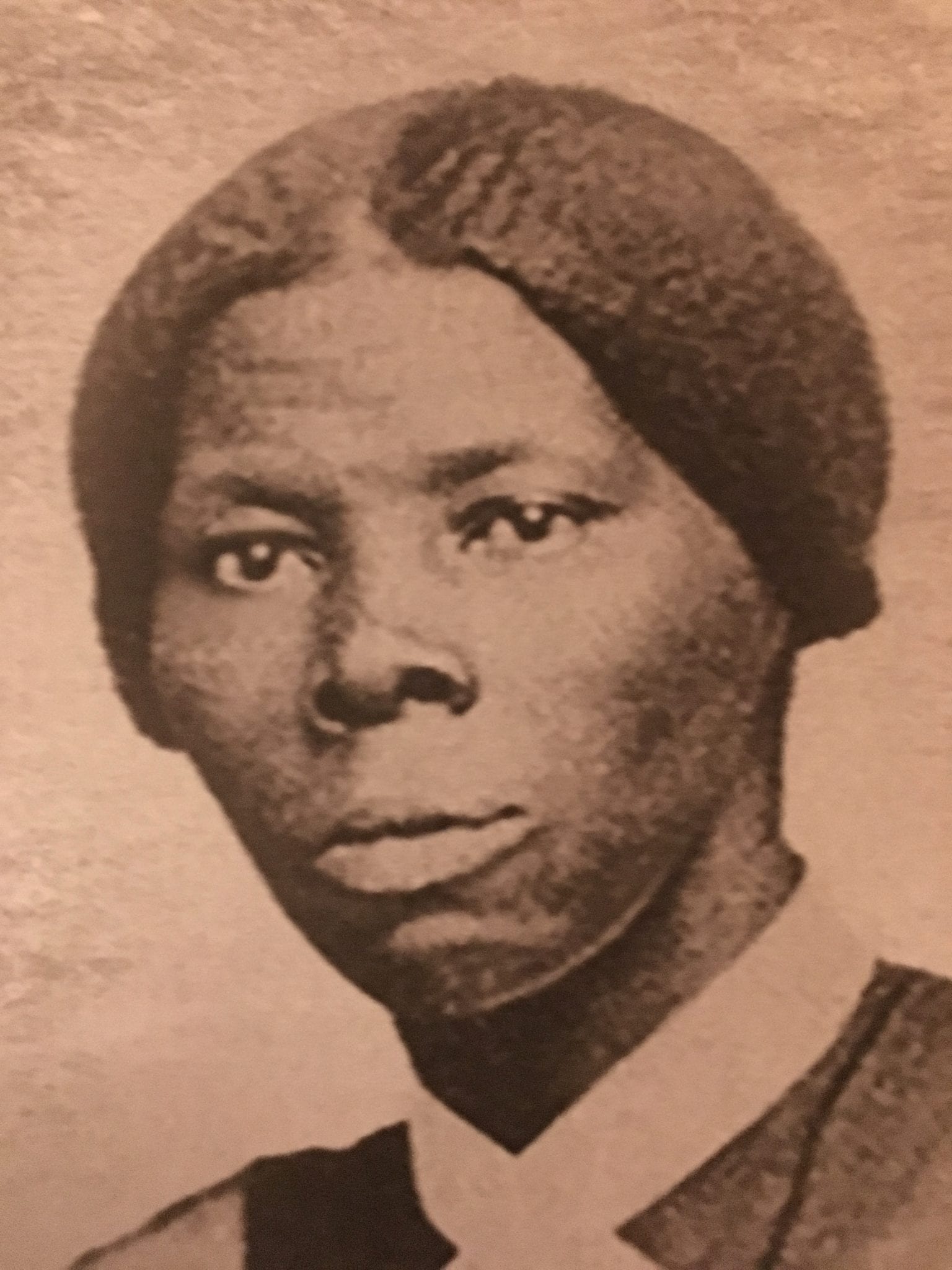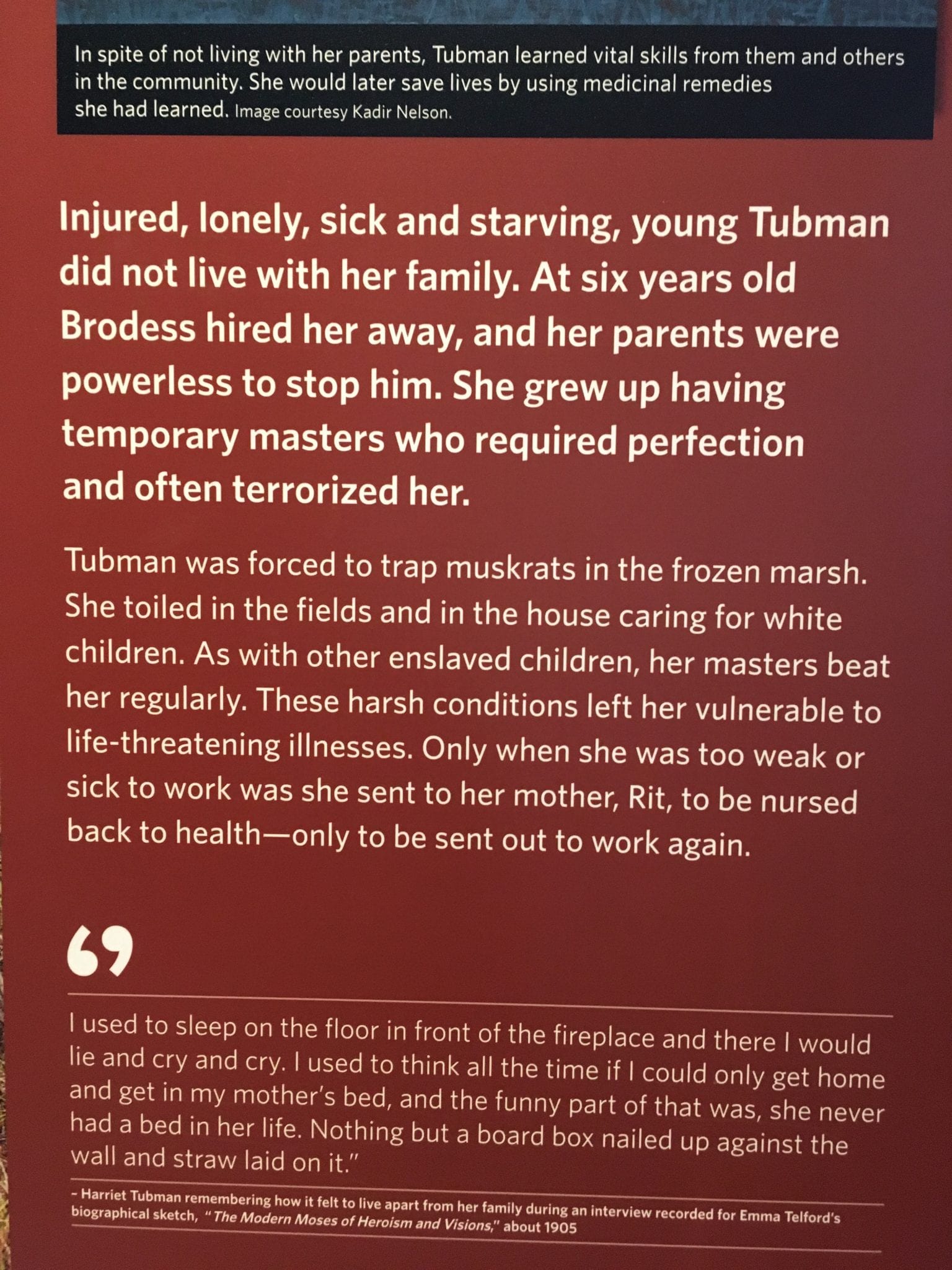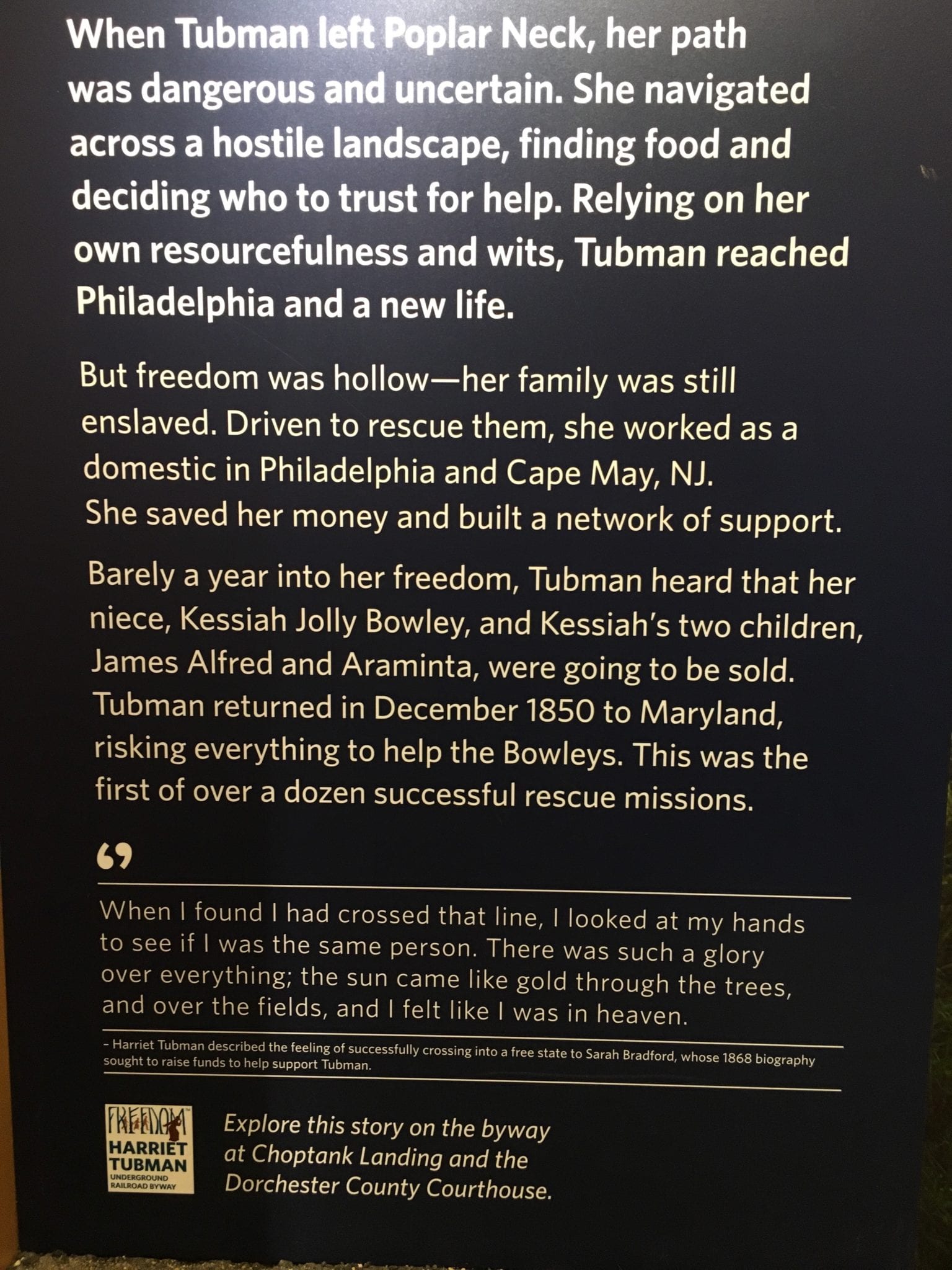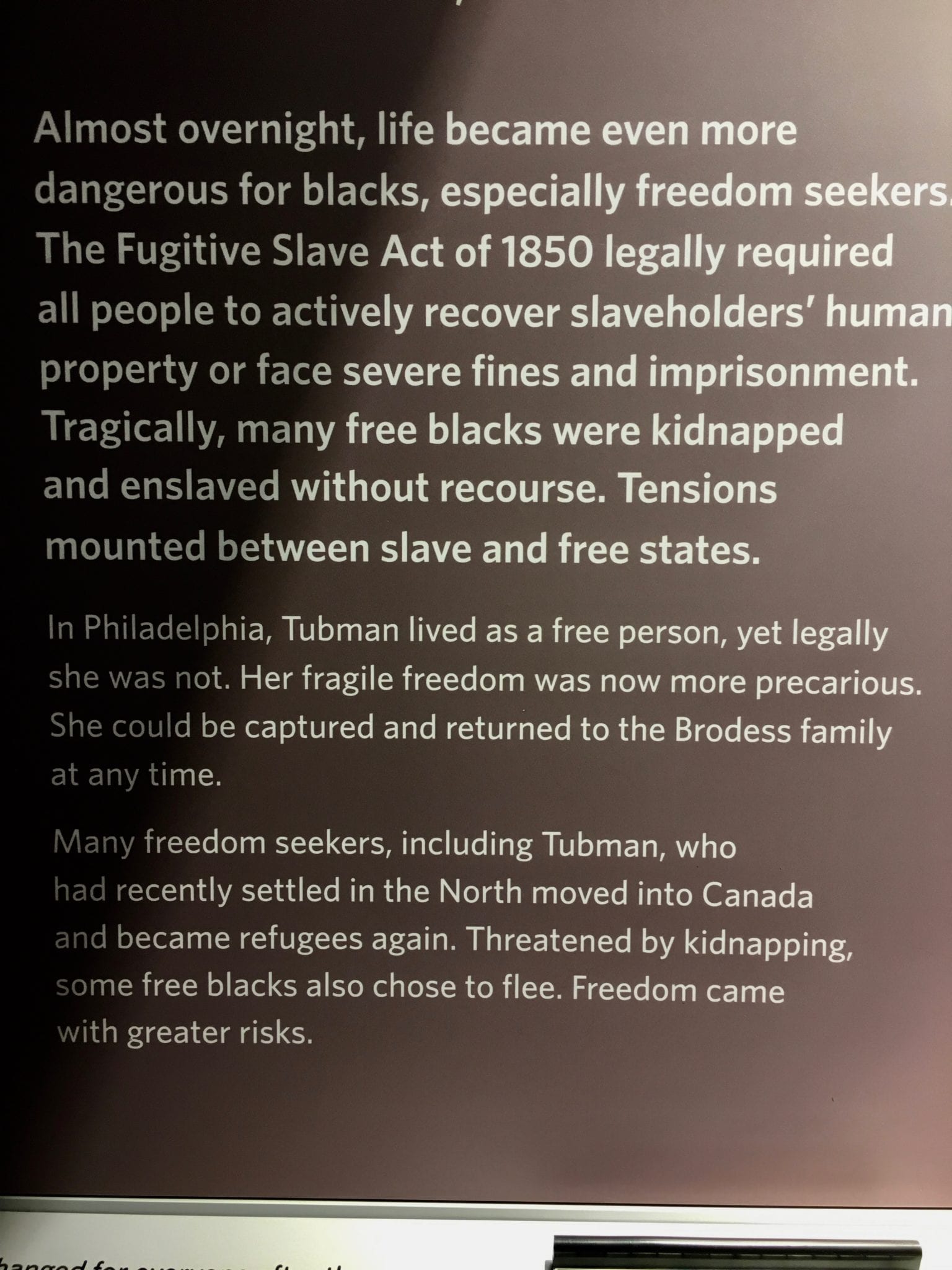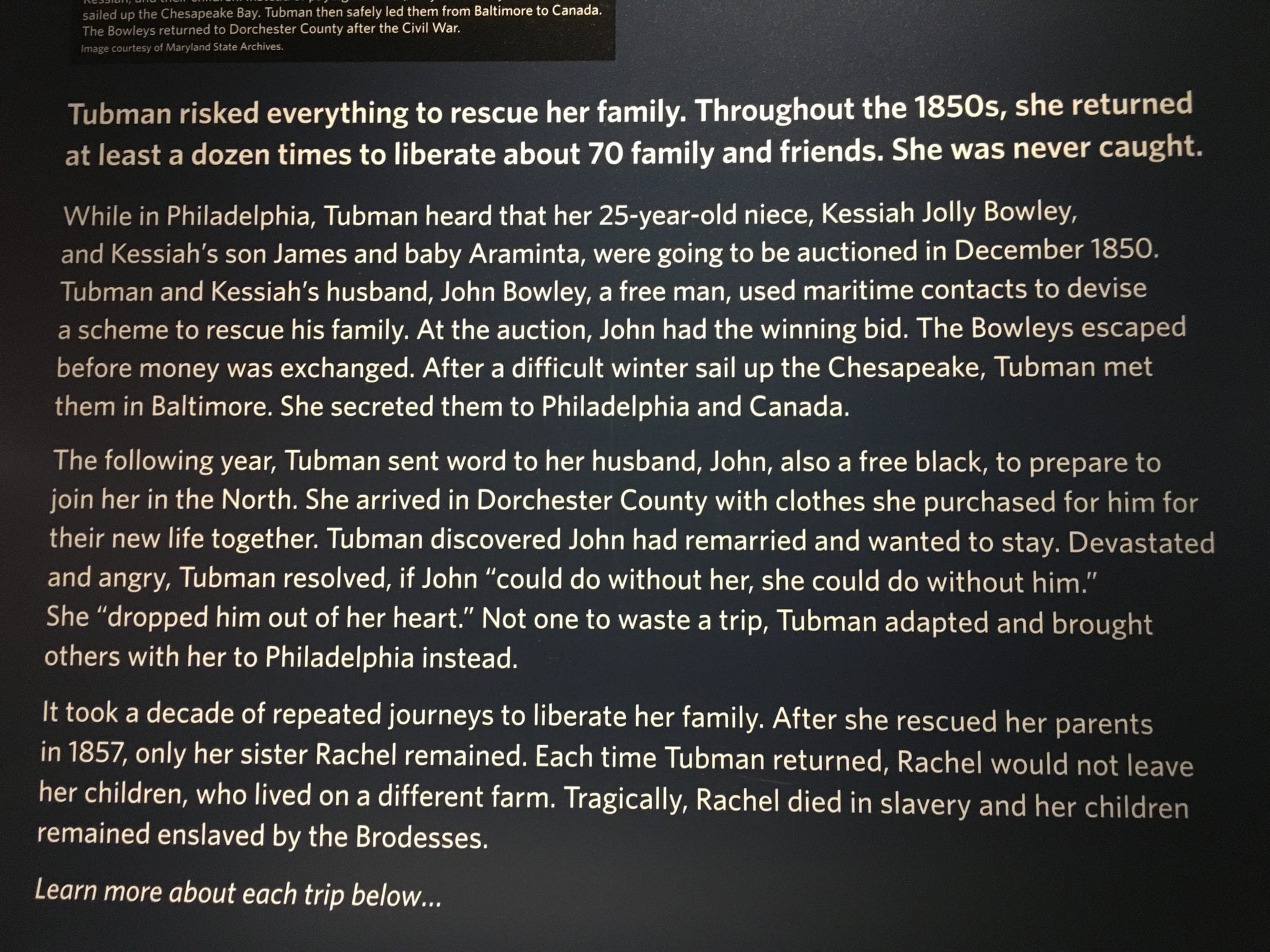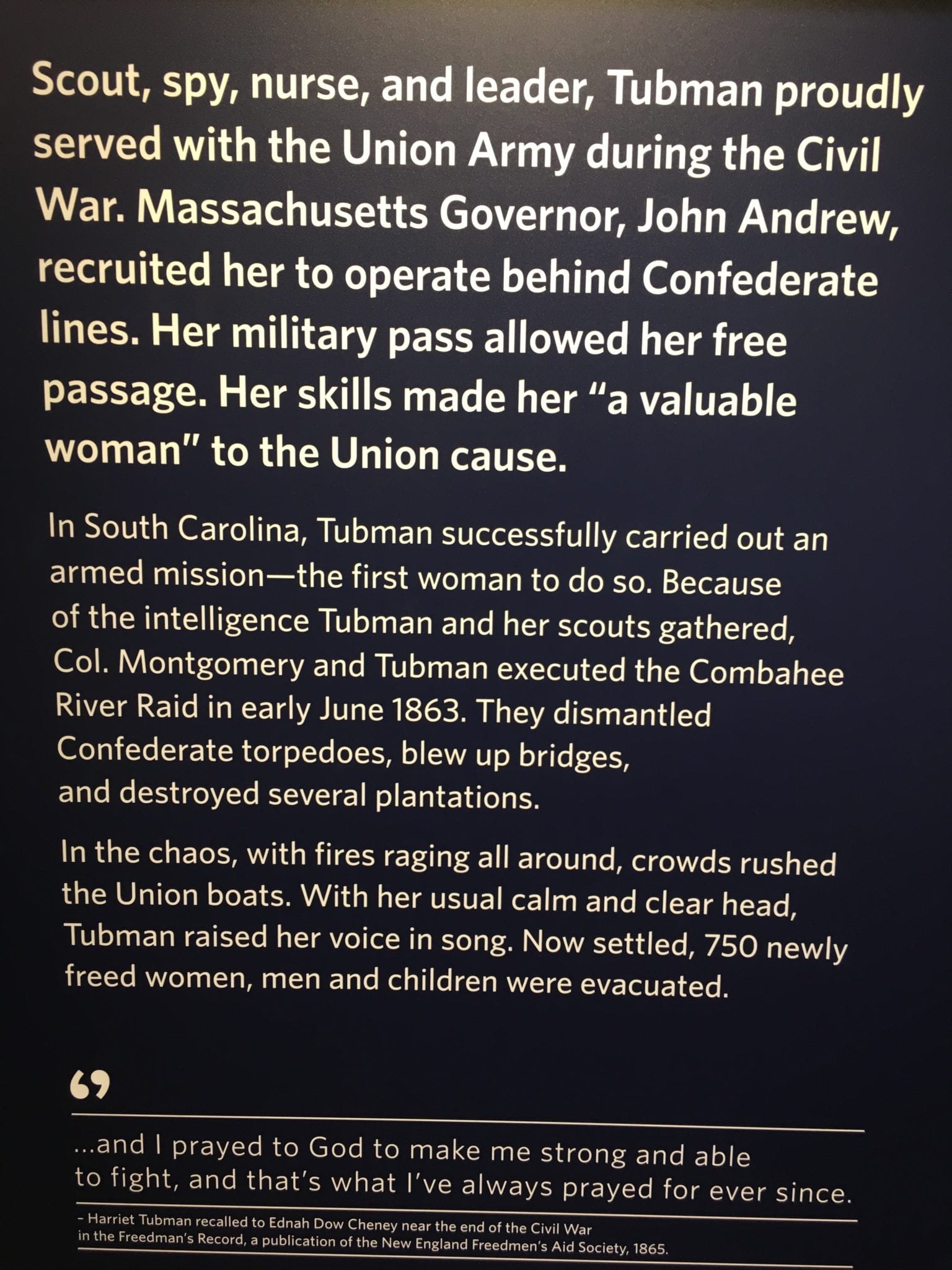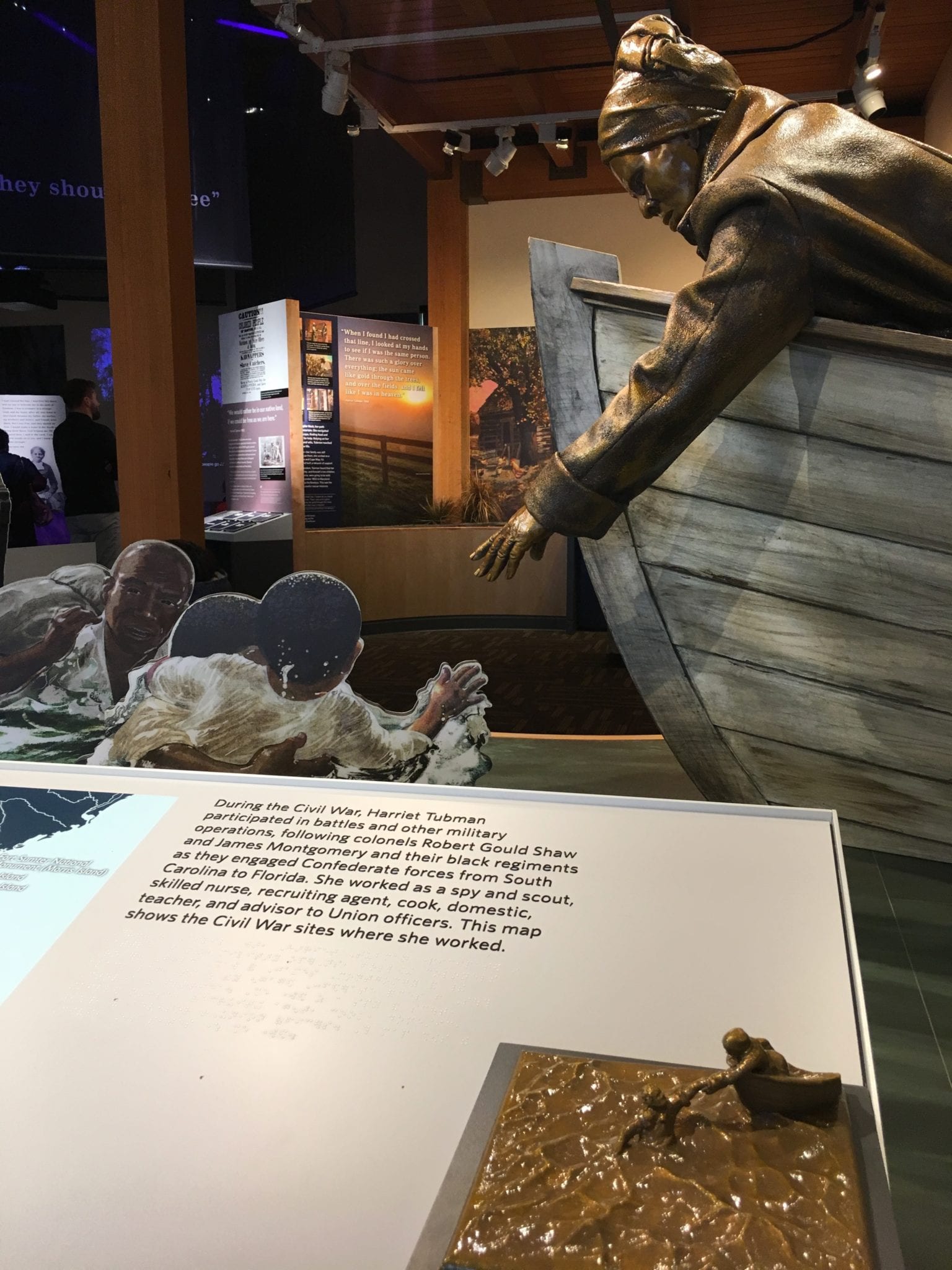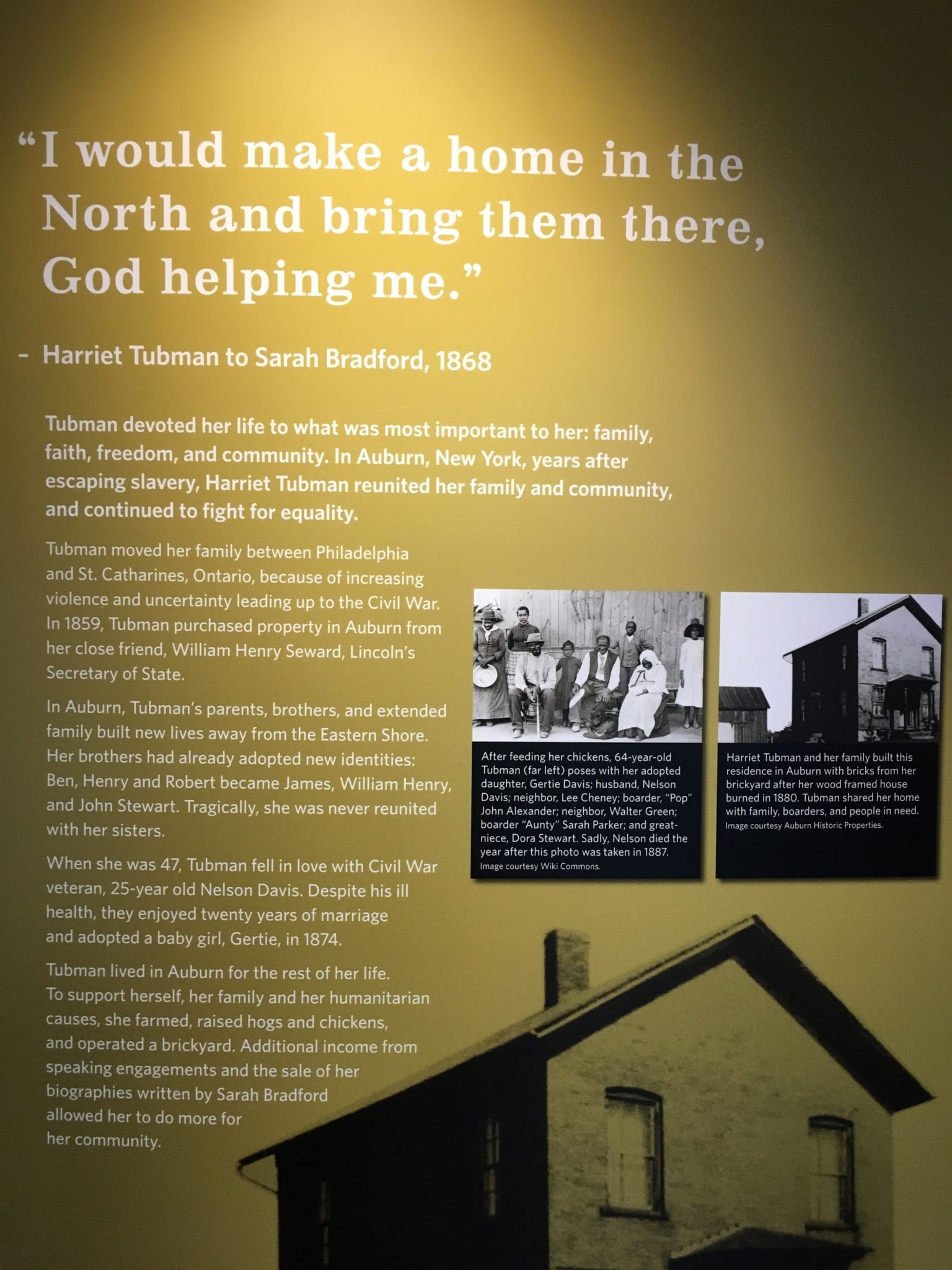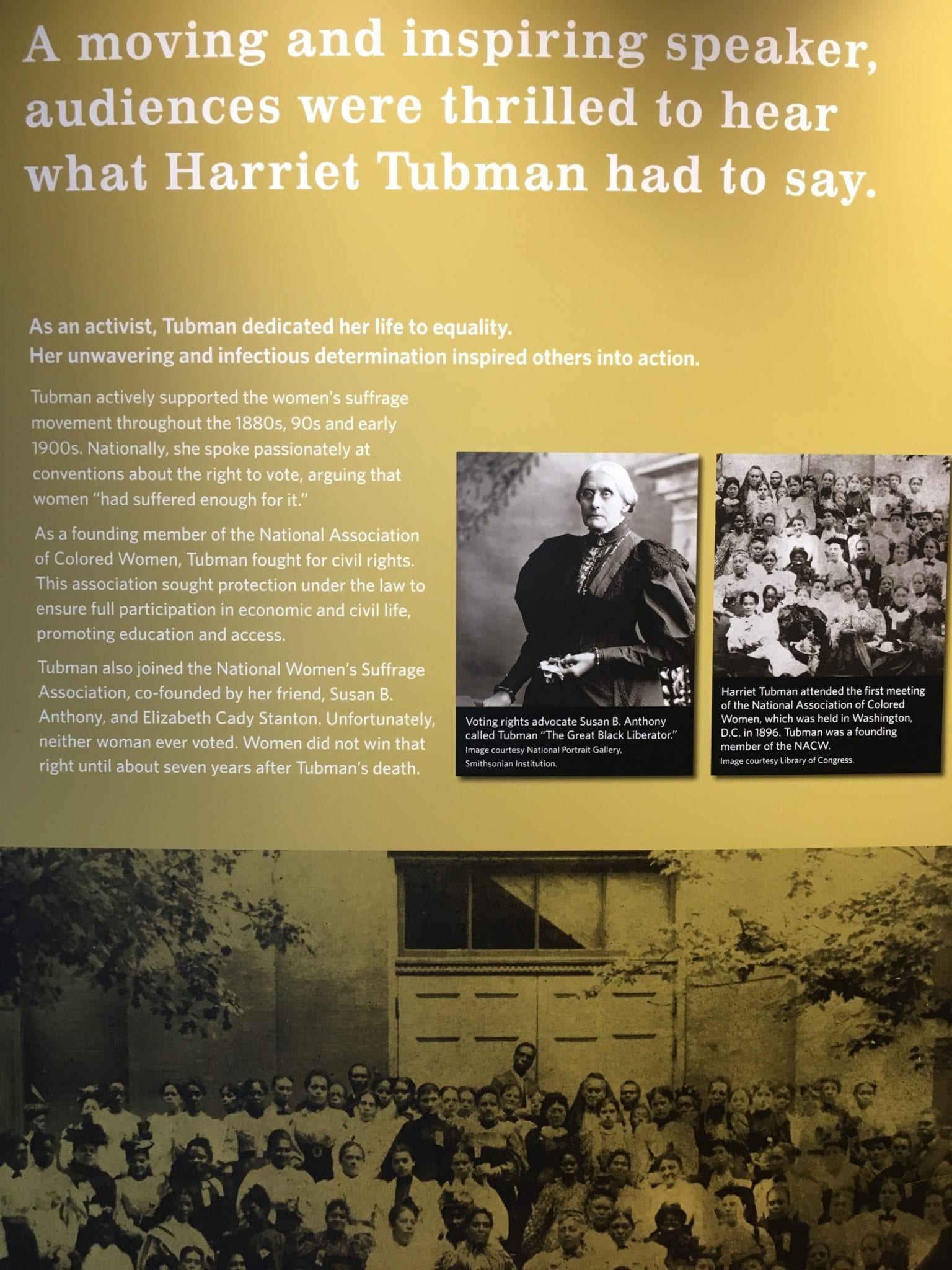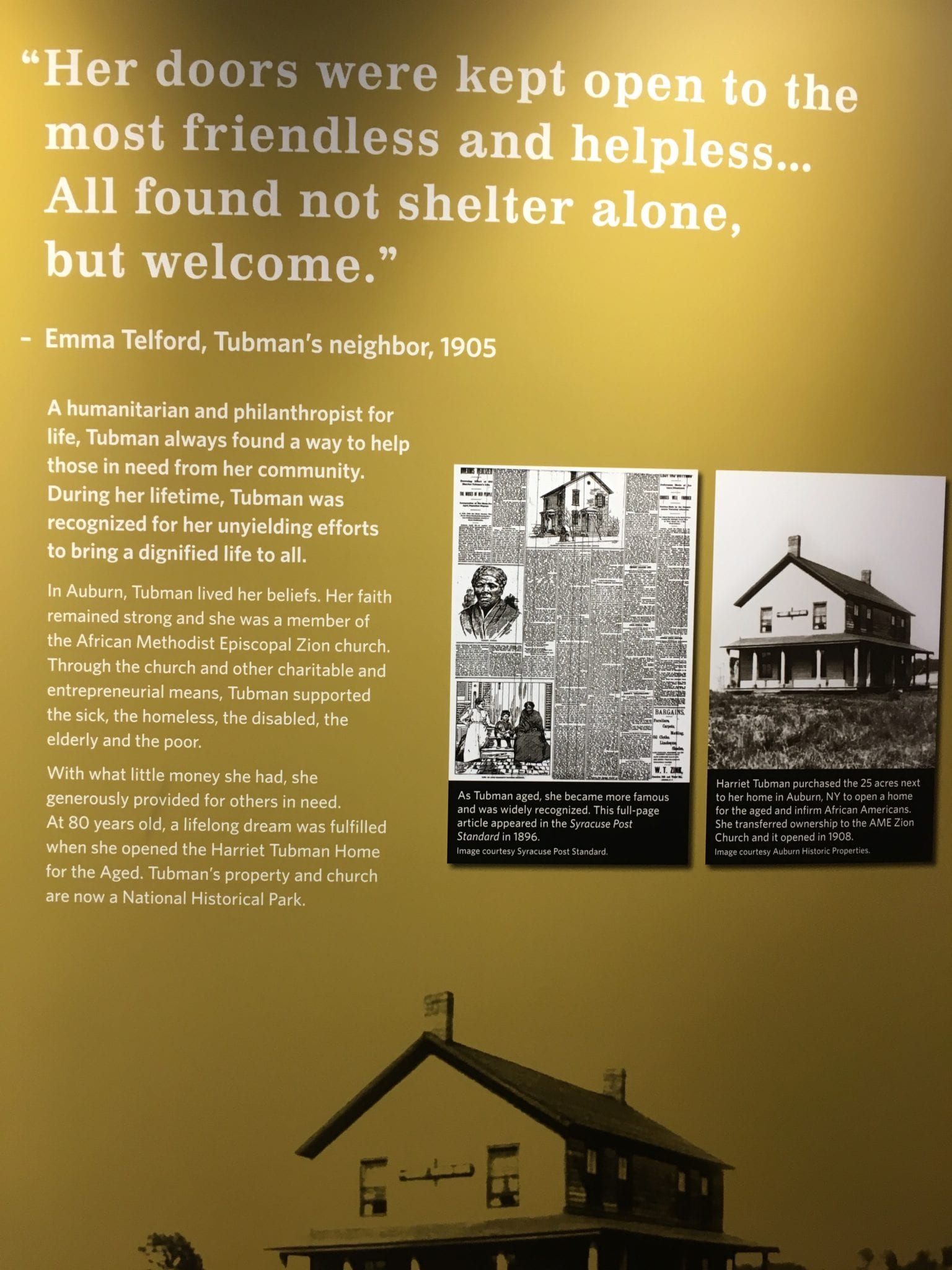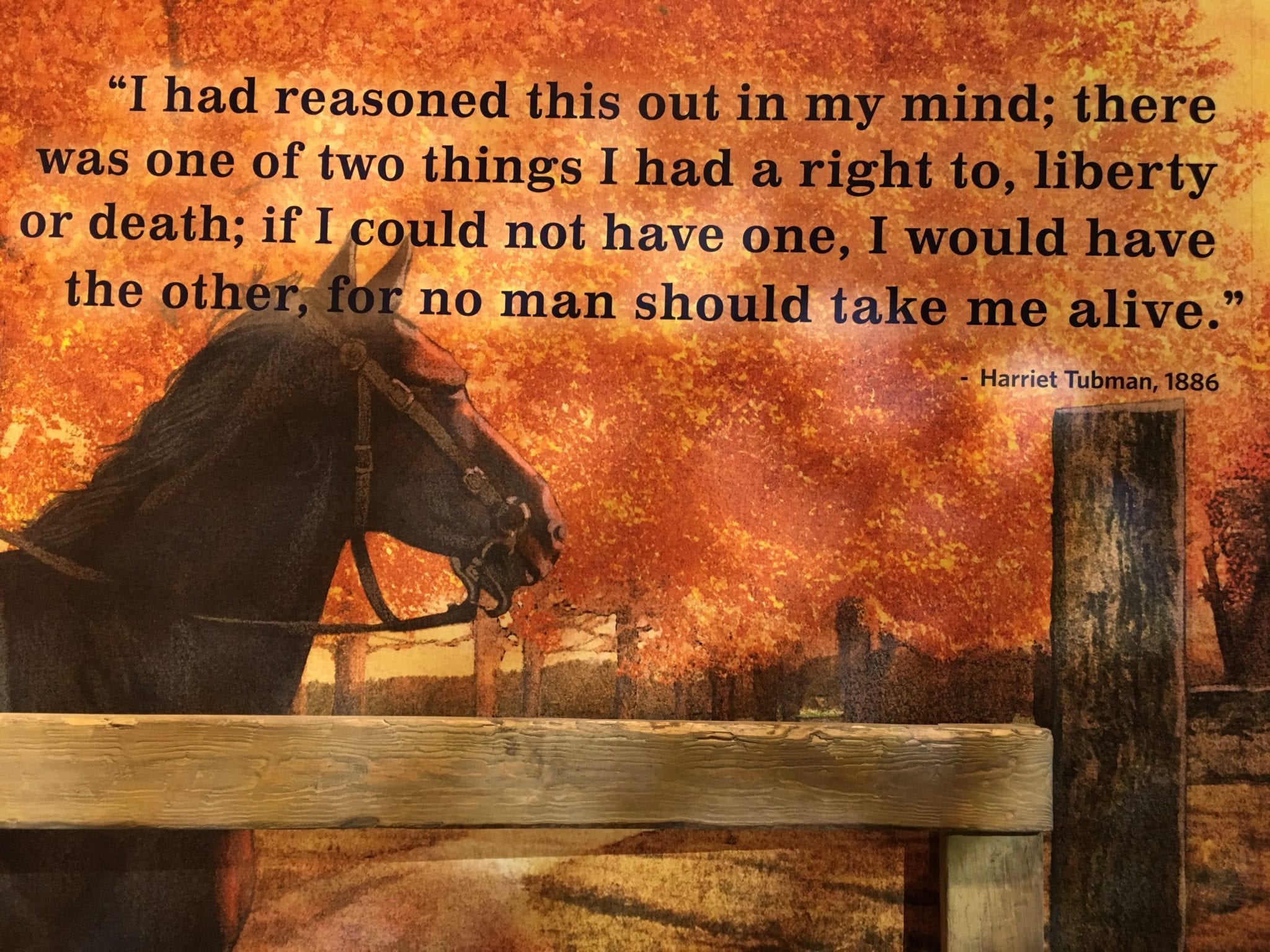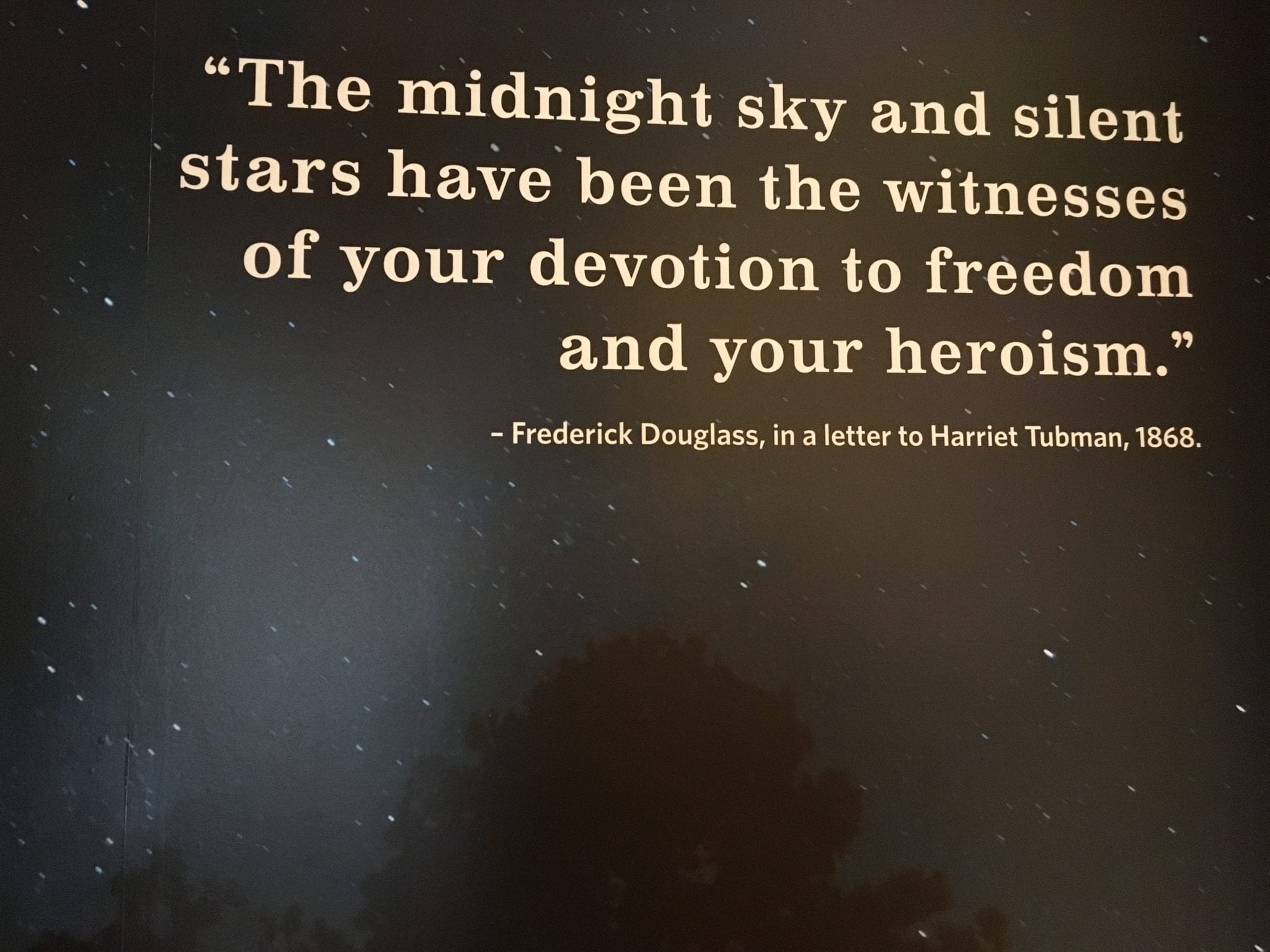I had a basic sketch of Harriet Tubman in my head. Underground Railroad. Led scores of enslaved people to freedom in the north. But really, I had to be with the enormity of this. She had spent her life as a slave, mostly separated from her family, performing brutally difficult labor, was regularly beaten, and was constantly under the threat of death. She managed to escape and began building a new life, and less than a year later, started GOING BACK TO HELP OTHERS GET OUT. In the shadow of the Fugitive Slave Act of 1850, which legally required all people to actively recover slaveholders’ human property, this WOMAN, this BLACK woman, this black woman who was ONLY FIVE FEET TALL – went back into the belly of the beast over a dozen times to liberate about 70 people. And then (and then!) she was recruited by the Union army to operate BEHIND CONFEDERATE LINES, and (and!) she was the FIRST WOMAN TO CARRY OUT AN ARMED MISSION. She freed 750 enslaved people in one day.
Never resting on her laurels in later life, she bought land, farmed, ran a brickyard, adopted a child, spoke publicly, helped found the National Association of Colored Women, was engaged in the women’s suffrage movement, and raised money for the sick, the homeless, the disabled, the elderly and the poor. Extraordinary.
I apologize that there are not more images here. I was so caught up in understanding Harriet Tubman’s life story, that I was fixated on the signs.
- Harriet Tubman
- One of the things that blew my mind was hearing about this work Tubman was forced to do as a child, trapping muskrats in the marsh. What excruciating risk to any body, to be immersed in the wet and cold for hours – especially for a young person. I imagine she learned some of the skills that became so valuable later in helping smuggle people along the Underground Railroad.
- “When I found I had crossed the line, I looked at my hands to see if I was the same person. There was such a glory over everything; the sun came like gold through the trees, and over the fields, and I felt like I was in heaven.” And then she went back, again and again, to save others.
- The Fugitive Slave Act of 1850
- Some details of one of the escapes. Tubman used a patchwork of many strategies and contacts in her many successful efforts to get people to freedom.
- Tubman’s Civil War service
- This National Parks site opened in 2013, and not only has signs in braille, but also has a number of the images cast in miniature 3-D so the blind can “see” the scene with their hands.
- Tubman’s later life
- Tubman’s Women’s Rights activism
- Tubman the philanthropist
- Harriet Tubman speaks
- To Tubman from Frederick Douglass


